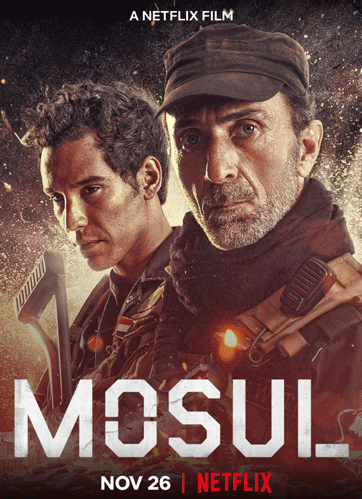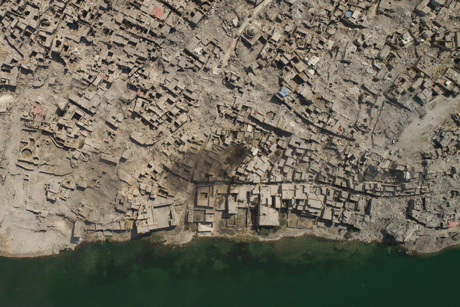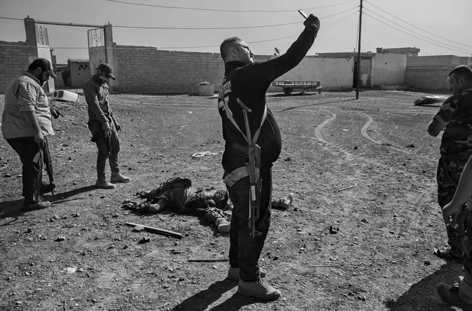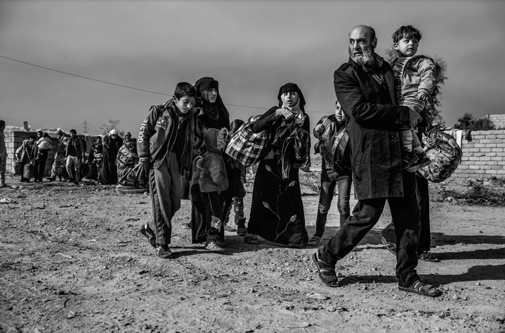At first glance, Netflix’s film ‘Mosul’ seems to be just another military-centered action movie about war in the Middle East. However, it might be one of the first Netflix productions to not only incense ISIS, but also to forgo prevailing stereotypes of the Middle Eastern war film and change the prevailing view on this war held by the global community. (If you have not seen the movie, be prepared for spoilers!)

Within the first scenes of ‘Mosul’ it becomes clear that this film is not the standard glorification of Americans winning a battle in a war in a foreign country. The main story of Mosul revolves around the main character Kawa, a young policeman who gets chosen to join the Nineveh SWAT Team on their last mission in Islamic State occupied territory.
The film, which was created by screenwriter Matthew Michael Carnahan and producers Joe and Anthony Russo, premiered in November 2020 on the streaming platform Netflix and is based on an investigative 2017 article by The New Yorker.
The action-thriller soon became one of the most-watched films in Europe and the Middle East. With this success, the crew and cast also faced threats from the extremist group ISIS.
One of the lead actors, Suhail Dabbach (who played Major Jaseem) described the situation in a recent interview :
“When I posted on my social media that the film was going to come out, the first day there was a lot from ISIS. They put on a lot of videos and bad words. Like, they have said, now we know you, and you have to watch yourself. Every day, touch your head to make sure it is still on. They said… we know where you live and we will reach you.”
To better understand the significance of the movie, let’s look at a brief history of the city in which it takes place.
The History of Mosul
Once one of the largest cities in Iraq, Mosul was taken over by ISIS on June 10th, 2014. Also known as Islamic State, ISIL, or Daesh, ISIS emerged from the existing terror group al Qaeda in Iraq.
When ISIS took over Mosul in 2014, a war involving the Iraqi government and international actors began. The aim was to free the city and its citizens to prepare for a future in which cities provide opportunities for all with access to basic services, energy, housing, transportation and more, aligning with the United Nations Sustainable Development Goal for Sustainable Cities and Communities.
In October 2016 the Iraqi government officially started the campaign to free Mosul from the IS.
Since then, Mosul has been in a state of war, with thousands of people, including children, being used as human shields by ISIS to defend Mosul.
The conflict in Mosul would continue until the end of July 2017, when Mosul was finally freed by the Iraqi government, declaring “full liberation” in January 2017.

The Journalist's Story
Journalist Luke Mogelson and photographer Victor J. Blue joined and accompanied the Nineveh province Swat team on a mission in 2016. In their article “The Desperate Battle to Destroy ISIS,” Mogelson and Blue were able to bring the war in Mosul and the individual stories of the SWAT team members to the reader's living room as accurately as possible.
The work Mogelson and Blue brings to light the importance of the Sustainable Development Goal for Peace, Justice, and Strong Institutions as well as for Good Health and Well-Being, as it illustrates the extent of the physical and psychological harm inflicted on innocent people by corrupt and violent regimes like ISIS.
The Film Adaptation
Accuracy was one of the main aims of the Russo brothers in this production. As Anthony Russo explained in an interview:
“Iraq has suffered so much trauma because of these wars, we hope this movie can play a role in a healing process in the efforts to rebuild after this trauma. Even though this is a brutal, violent moment we explore in this story, we all found something very inspiring and hopeful. And any way that we could lend some sense of hopefulness felt very valuable and urgent to us.”
Staying true to this goal, the cast of the film, which was primarily made up of actors from the Middle East, had to go through a three-week military boot camp, during which they were trained by ex-military elites. Throughout the course of these three weeks, they learned how to handle the same weapons (mainly Russian Kalashnikovs) and fighting tactics of a real SWAT team. The training process helped to build a strong bond between the cast members, with the Iraqi actors even helping the non Iraqi actors to adapt the typical dialect.
“By the time we were done, the military instructors were saying that they wouldn’t worry about taking any of our actors into an actual fight,” said Carnahan.
A full Interview with the Mosul Actors and the film director can be found here.
Reality vs. Fiction
Despite the aim for accuracy, there are some moments in the film where the lines of fiction and the reality of the actual events are blurred.
For one, the young police officer Kawa is not part of the original New Yorker piece, but rather was created in order to introduce the audience to the members of the SWAT team and to act as a guide through the story.
Nevertheless, the film still portrays a number of true to life details.
One such detail is the list of names that Major Jaseem checks in the very first scenes of the movie.
According to the New Yorker, such a list did in fact exist, and was supplied by the Iraqi Intelligence Services to supply the forces with names of ISIS fighters and their sympathizers in Mosul. The names on the list determined what prisoners got to live, and which ones were killed.
Further, the “ritual” of SWAT team members taking selfies with IS fighters who they have killed, also occurred in real life.

A shocking but true detail in the movie is the video showing the execution of Major Jaseem’s brother, who was condemned to death for joining a clandestine operation against the IS. This video was shown to New Yorker journalist Mogelson by a SWAT team member named Bashar Hamood. In the Netflix film, it is explained to the fictional character Kawa that it is footage such as this that provokes the team to kill the ISIS fighters they capture. In Mogelson’s article, the incident is described slightly differently. According to him, Bashar explains that it is forbidden in Islamic law to kill prisoners, and it is the breaking of this law by the IS that pushes them to break it as well.
Regardless, the primary mission of the SWAT team in the movie is indeed true to life. As Kawa learns at the end of the movie, the main goal — the “last mission'' — is the liberation of the relatives and families of the SWAT members, even if it means disobeying a new order from the Iraqi government.
In Mogelson’s report this "mission" is a recurring topic within members of the real SWAT team, describing the hope and belief to save their loved ones from the terror of the IS in Mosul.

Despite certain creative embellishments, the film Mosul remains one of the most accurate interpretations of war on Netflix. The unanswered questions posed by Kawa throughout the film act as a symbol of the perplexity and futility of the war over Mosul, illustrating the need for peace and well-being for the war-torn country and its people.
